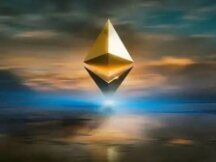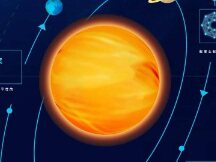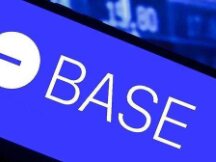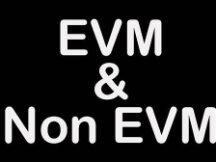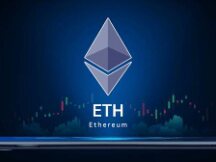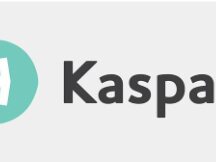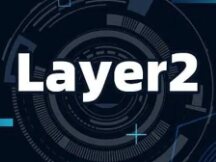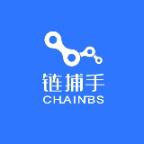A detailed description of the functional and development characteristics of NEAR public telephones
Ethereum is arguably the most widely used smart bond platform across the blockchain ecosystem. However, scaling issues set the stage for improving other blockchains, each aimed at achieving the same goal. That is, it is unreliable, steadfast, unauthorized, transparent, resistant to censorship and useful to the needs of the public while retaining its character.
The problem is that many platforms don't have as many developers, users, and functions as Ethereum. The new public channel is capable, but is a little soft. As a result, they compete for a significant share of blockchain players' interests, and a lack of meaningful collaboration has led to potential for ecosystem improvement.
Of course, these problems are not solved and NEAR has new ideas. The following will generally help you understand the changes to the NEAR protocol and its main features.
team
The NEAR public mainnet was launched in October 2020 and was created by two experts, Illia Polosukhin and Alexander Skidanov, who entered the cryptocurrency space in 2017-2018.
Illia specializes in the in-depth study and research of language comprehension, which coincides with her previous role as president of Google. Alexander previously served as Director of Engineering at Microsoft and MemSQL, specializing in non-blockchain fragmented data and other skills.
In late 2017 and early 2018, the team worked on a programmable system of smart bonds and cryptocurrency payments. Later, they realized that the state of the art could not be achieved and they started to create their own. In August 2018, Illia and Alex formed a team to develop the NEAR protocol.
As Tim said earlier, “We dream of 3 ICPC Gold Winners (Mikhail twice at the World Championships), 3 First MemSQL (creation of partitioning for distributed databases) and 4 Xoogler (creation of widely distributed technology). We have put together a team. "
participation and investmenttus khub
NEAR's industry performance in technology has attracted marketers like 16z. In March 2020, NEAR raised $21 million in funding led by a16z. A comprehensive look after the transition to cryptocurrencies reveals a deeper understanding of blockchain scalability and sharding, including the strengths and weaknesses of Ethereum 2.0 and Polkadot methods. In addition to a16z, investors include Ethereum project developers such as Libertus, Blockchange, and Animal Ventures. Other investors include:

Technology
To stand out from other smart contracts, the NEAR protocol stands out as much as possible.Friendly developerspecial.
The platform seeks to provide a measurable and reliable blockchain by sharing in a secure environment. When sharding is enabled in NEAR, the network expects to change the number of shards supported based on user needs. The project uses a measurement concept based on the "dynamic repartitioning" application. Because you can only pay for the upgrades and upgrades your network needs at all times. Dynamic resharding can be the best way to measure and secure a network connection because node needs can change with demand.
The platform claims usage is limited to 100,000 TPS when used in conjunction with a development process called Doomslug. According to the authors, networks are able to reach a certain level of performance (which is practically irreversible) after the communication environment, and use BFT using the hardware breaks down after the second communication. Last Truth in Doomslug (or Last in Doomslug) refers to the state that cannot recover from a blockade until at least one participant is blocked. Doomslug also allows the network to continue building and using blocks as long as more than half of validators are online and honest, and the final process will be halted if less than two-thirds of participants are online.
NEAR has developed its own PoS variant. This method, called Thresholded Proof-of-Stake (TPOS), supports 1 second of block time and 2-3 seconds of discrete recovery without any delegation changes. The NEAR approval mechanism is called Nightshade and the system is modeled after a blockchain. The list of operations in each block is divided into physics, one for each shard. All the parts are united in a single block. It is important to note that the data block is only visible to the node that controls the state of the fragment.
Each logical block should theoretically contain all transactions for all shards. However, it did not start due to the low cost of the advertising reasons blocking the network. Instead, each member of the network monitors the state of the shard that validates transactions and optionally adds shards that it monitors.
When the miners create the blocks, they write the signatures from the validator nodes. Therefore, the weight of the block is equal to the total stakes of each signer in the block. The weight of the chain is equal to the weight of the material. Consensus also uses a non-invasive system that adds an additional slicing process to improve chain stability.
The NEAR reward block rate is adjusted to 5% of the APY. There is no advantage to average stake chips in TPOS as the payout is proportional to stakes. In theory, this could improve network distribution by eliminating storage space support. There is a maximum of 100 "addresses" per partition that validators can use. The cost of buying a position is proportional to the total amount of NEAR wagered, and validators and participants will dump regularly.
Each shard is protected by a subset of validator nodes that declare the current state of the shard as part of each new block.
Cooperation
NEAR encourages collaboration, especially with the ETH-NEAR "Rainbow Bridge". The bridge has an Ethereum light user NEAR contract written in Rust and an Ethereum light user Ethereum contract written in Solidity.
The promise of unreliable trading across both chains is very appealing. However, there are still restrictions on irreversibility. As the NEAR notes, "The latency of the ETH-> NEAR interaction equivalent to the value of X Ethereum blocks is generated, which is approximately 6 minutes at 25 blocks." Latency between NEAR and ETH is currently 4 hours, but was reduced to around 14 seconds after EIP - 665. "
4 hours soon, but EIP-665 (Ethereum Improvement Program) will solve this problem.
However, for some applications the 4 hour delay is too long and third parties may allow faster removal of ETH chains to reduce friction.

Rainbow Bridge was released in the first half of April 2021. The whole team spent a lot of time applying stitches and finishing corners and angles to ensure the safety of the process. With the development of the Rainbow Bridge, NEAR has become a flexible and inexpensive solution for many functions of the Ethereum Layer 2 platform.
to the right
NEAR describes many aspects of chain management. The white paper states that the reservation is too much interference in the management process, asserting that “there is no 'human reason' in some decisions, as is required. Clearly in all cases. This can be problematic, so it's easy for some to struggle, but the decision-making process is not. "
In the absence of clear definitions, the management of NEAR seems immature. Currently, only validators can vote on the recommendations. Their support opens the way for NEAR transmissions within the main network.
Management communication is open to the community, individuals or organizations can submit improvements or comments, and management discussions can be viewed at NEAR meetings.
In most cases, recommendations will go through a process where they receive community input and feedback. The NEAR development team will include repairs when the concept is sufficiently supported. The effective date is determined by the severity of the change (i.e. critical processing is completed immediately). The validator ultimately uses the new user to determine whether to accept the new process.
Ecosystems and Use Cases
NEAR has worked hard to present itself as a developer friendly platform. These nodes can run the WASM standard supported by most browsers. Smart contracts can be written in Rust or their JavaScript equivalent. The NEAR team has developed an ecosystem that includes one-click delivery, measurement room measurement, and other key tools that will drive developer development. NEAR has also developed a strategic plan to reduce exchange rates. Similar to the Ethereum enterprise meta, developers can help cover the cost of using DApp to manage accounts.
Aurora is an Ethereum L2 protocol that builds on the Ethereum experience for developers and consumers in addition to the NEAR protocol. Aurora combines two technologies: EVM capability and a powerful chain bridge to deliver an unparalleled experience. Developers can connect Ethereum decentralized applications (dApps) to other Ethereum contracts and tools and submit them to Aurora in minutes. Ethereum exchange rates have reached record highs due to international connectivity.

Aurora continues to restrict fuel prices until she brings the exchange rate down to pennies. Aurora allows developers to reuse existing Solidity and Vyper contracts, while users access these apps through MetaMask and other Ethereum wallets. At the same time, Ethereum ERC-20 tokens and tokens were sent to Aurora via the amazing Aurora Bridge (as Rainbow Bridge). Aurora expands the NEAR ecosystem by integrating all EVM-based applications while redesigning the capabilities of the Ethereum ecosystem with low-cost, industry-leading end-to-end business and scalability.

case study
With the introduction of the Rainbow Bridge, DeFi now runs on NEAR and is open to all users worldwide, enabling cryptographically authenticated authentication of NEAR usage in Ethereum contracts and resumes again. All Ethereum assets currently valued in the tens of thousands of dollars now work in the NEAR app. Here are two key points:

flux
Flux is the native DApp of NEAR, a security exchange that rewards employees for their work (including public engagement fees). Flux enables partners to work together to create a collaborative and friendly environment with great potential. Flux's decentralized forecasting activity uses equipment to measure probability. It is currently unclear whether Oracle Flux technology will be used to estimate business benefits.
Makers can use Flux to build a business for a product, global event, or something else.
It is the first cross-chain oracle to deliver data protection business value to the blockchain. Flux announced a connection with Aurora shortly after its release, which will help expand DeFi into the ecosystem.
Shortly after the launch of NEAR, Flux announced a partnership with Aurora to support the DeFi expansion of the ecosystem.
At the time of the broadcast, Ze DeFi's TVL was estimated at $150 million.
Mintbase - NFT Marketplace
NFT is the digital product of the NEAR blockchain, where developers can receive notifications during a business transaction, and any business can receive funding. Mintbase is a large NFT space that focuses on the entire NFT space on a specific area, such as a game or a theater. Mintbase started on Ethereum and recently received $ 1 million to expand into NEAR.
As well, NEAR the home pageAs mentioned above, nowSuiteTo knowEthereum DeFi DAPPDeploy and improve in NEAR, AAVE, Maker, Chainlink et Balancer.Chainlink and Balancer are currently the fastest in development, Chainlink oracle is currently running on NEAR and Balancer has set up a joint venture license to expedite shipping.
token industry
NEAR is the process of identifying the history and unit of account. The main characteristics are:
For the safety:Users stake tokens to receive rewards and secure network. NEAR uses the PoS mechanism to protect Sybil from DDoS attacks.
Network cost:The network can be transformed by collecting application data and advertising. The network charges a fee to exchange this information. The NEAR network collects and engraves these values. So, as usage increases, more tokens are also burned. Developers are a small part of the cost of using smart contracts, and developing apps for the first time makes it more cost-effective for network applications. When the contract is called, 1% of the network exchange rate is included in the contract. System-level settings define the minimum value selected by the developer.
liveDistribution:

Jeton Tso:

Grants and Benefits: Token distributed for 60 months.
All adult members have a four-year closure period and will gradually reopen 12 months after the closure period.
First Defenders: All First Defenders have a fixed term of 12 to 36 months, usually 24 months.
The community competition will be held at another conference in August 2020. In total, more than 120 million tokens have been sold during this period. Of these, 25 million tokens were released and the rest were shut down linearly for 12 or 24 months.
Early Ecosystems: The closure period is typically 6–1212 months, but some are shorter or longer.
Foundation Donation: This donation is divided into two sections. The first section is locked and serves to ensure the completion of the first phase of the network, while the second is locked for 24 months.
Investment Capacities: Grants will be deposited in the first half of 2020 and early 2021, and this token is expected to have a 60-month closing period.
The NEAR protocol was announced on the mainnet on April 22, 2020 as the NEAR 1 billion genesis block. Each year, 5% of new devices are awarded as the best gift for network management, with a total of 60 million shipments, of which 90% are distributed to consumer devices (4.5% total) and 10% in the protocol libraries. (0.5% in total).
bye Byetie
When measuring the new platform entering the crypto space, it is necessary to assess the risks and limits.
Each NEAR block is made from this material. Unlike the concept of a "beacon chain", the key chain (Polkadot's relay chain) is a solid blockchain. This block has important advantages. Validators do not need to extract the state of the entire blockchain. This reduces the hardware requirements for the nodes, simplifies the installation of the user light, and facilitates network distribution.
This should, in theory, help simplify the NEAR mission of creating mobile devices. Currently, there is only one shard in NEAR, but we plan to create more to meet growing demand. Because inter-fragment communication is one of the biggest issues in keeping a fragmented blockchain, NEAR will be put to the final test.
Users participate in the approval and management discussions of NEAR community groups. In this regard, NEAR appears to replicate the off-chain social layer of Ethereum. It will be interesting to see if communities can add more to this governance in the future.
From 2021, prices and data will start pouring into the cryptocurrency ecosystem. How will clients use their legs and how will they cope? The solution is not yet clear, but its widespread use could have a detrimental effect on relationships with users.
Overall, there are fewer jobs in the NEAR ecosystem. To be competitive in 2022, we need to like more DApps and developers. Otherwise, it is dangerous to become a blockchain monster city. Don't let that happen. Ecosystem preference for consumers and developers is crucial.

Scan QR code with WeChat
